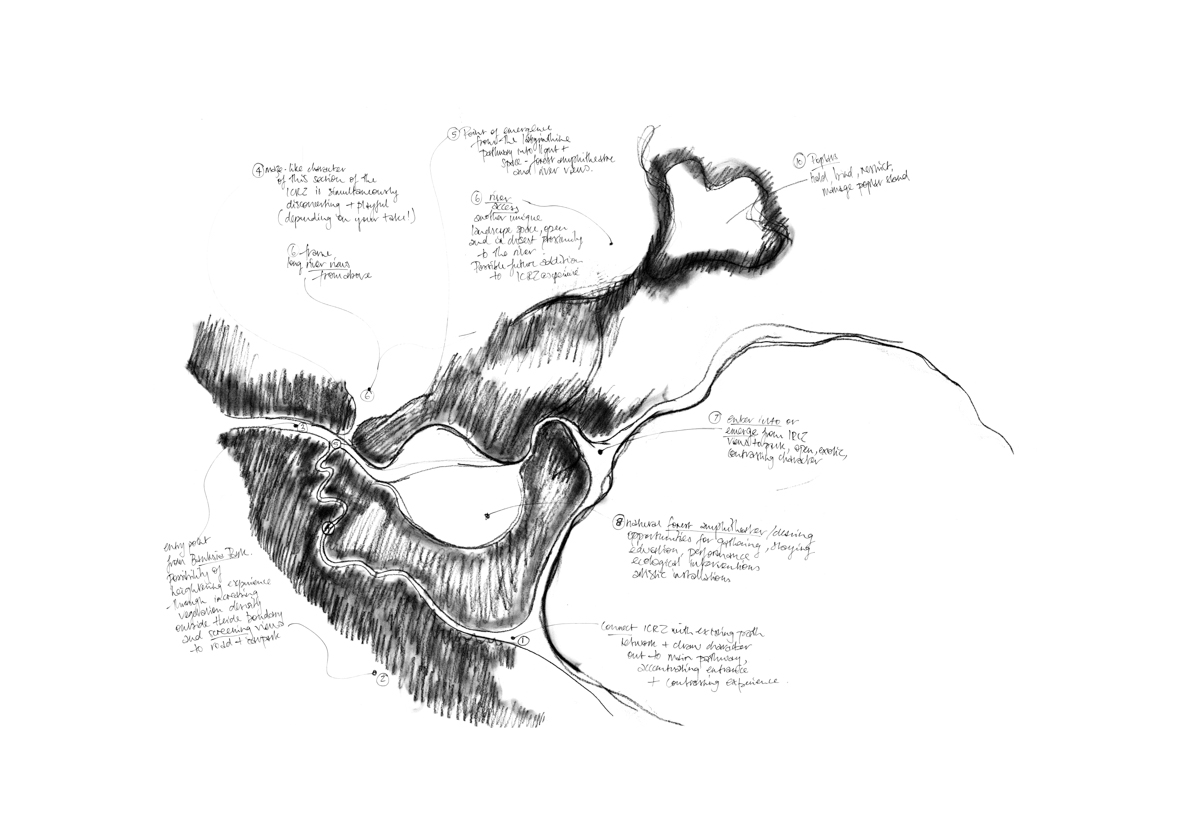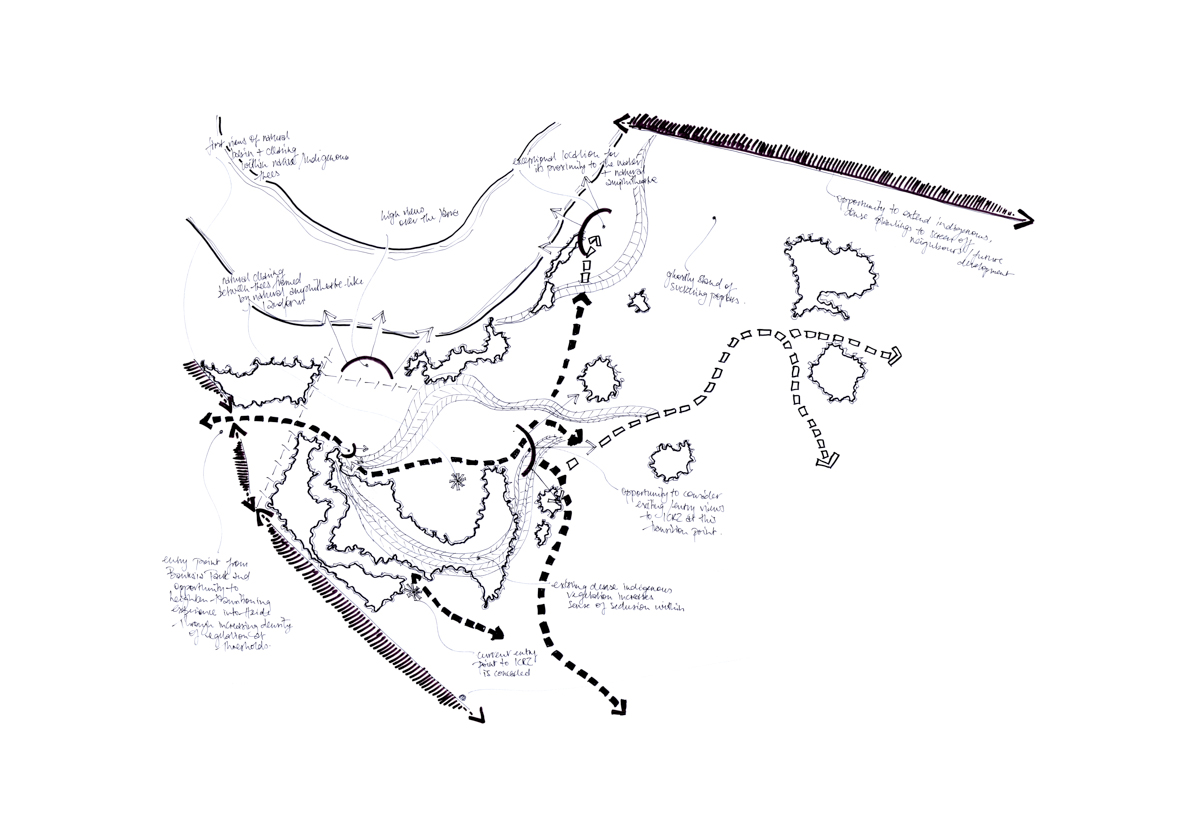In 1934, a year of record floods in Melbourne, indigenous seed borne by the flood waters self-sowed on the Reeds’ property, Heide. The resulting vegetation, once established, contrasted with the Reeds’ exotic, highly managed garden. In the 1960s, prompted by a broader environmental awakening and by his observations of the changed nature of this area, John Reed decided to ‘preserve and perhaps rehabilitate as much as possible of the Valley’.
In 2019, Urban Initiatives was appointed by Heide to develop a contemporary design response for the Birrarung River’s Edge to the north-west of the Heide site, which would build on the site restoration work originally started by John Reed.
The design approach has several key drivers. In addition to paying homage to continuing the work of John Reed and highlighting parallels between his story and contemporary environmental activism, it builds on the ambitions of the Heide Strategic Plan and the opportunities the landscape presents for public use and audience engagement. It also provides for the requirements of the Wurundjeri people and explores ways to showcase and tell stories of the landscape of the site on which the Museum sits.
For the Yaluk Langa project Urban Initiatives proposed a participatory design process and ongoing collaboration with Wurundjeri Elders, the Wurundjeri Woiwurrung Aboriginal Cultural Heritage Association and the broader Wurundjeri community. The objective was to ensure a strong connection with the project, its outcomes and Heide by default into the future. It was of critical importance to establish the Heide site as a culturally safe place.
Part of that engagement involved members of the Wurundjeri community, children and their families participating in a day of cultural landscape, feature and experience ‘mapping’ to confirm the location a metaphorical Songline and determine functional and cultural needs at Yaluk Langa. Ongoing cultural engagement with Elders and Wurundjeri community representatives has highlighted opportunities for the use of traditional land management techniques, educational and cultural expression in the landscape, particularly with a view to site healing.
The nuanced character of Country drives the design, with reading of the varying natural characteristics exhibited by existing zones inspiring differing approaches in each zone. This project is ongoing.
Location
Heide Museum, Bulleen, Victoria
Role
Lead Consultant
Client
Heide Museum of Modern Art
Traditional Owners
Wurundjeri People


